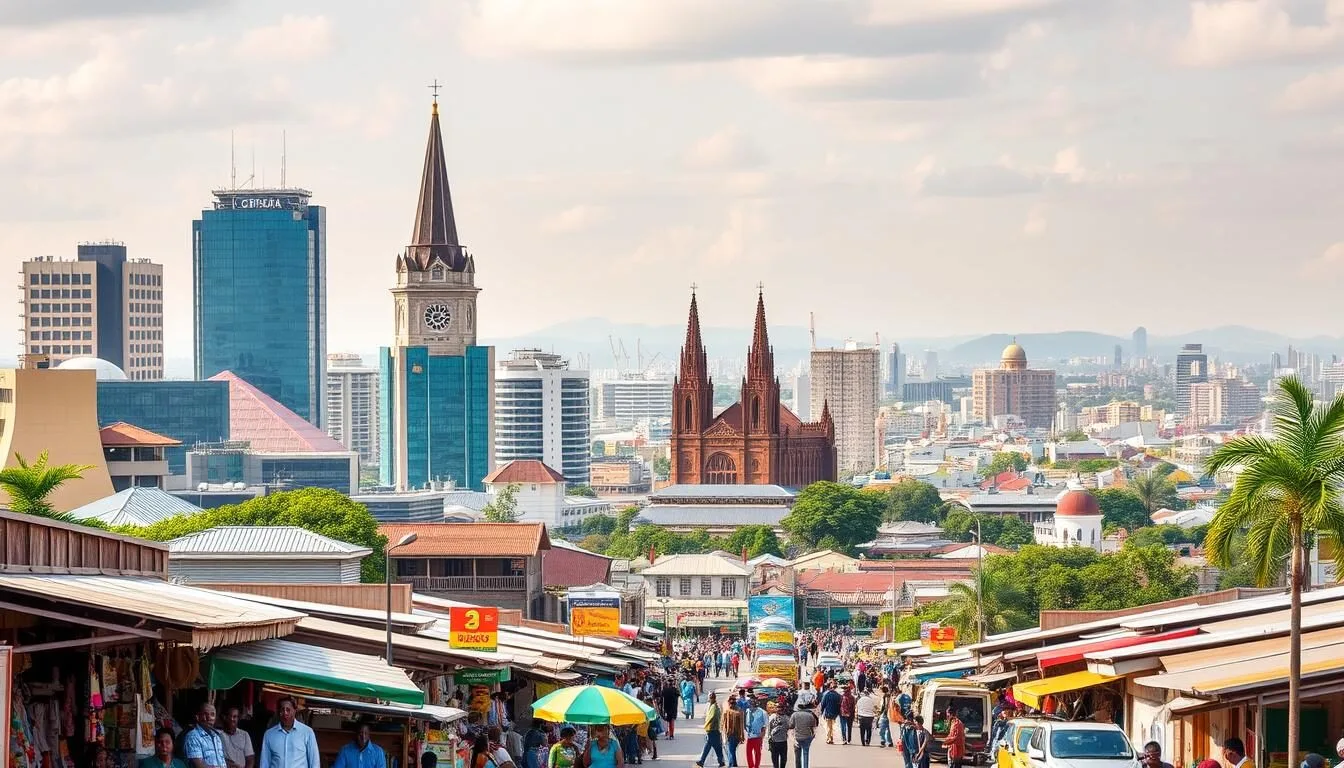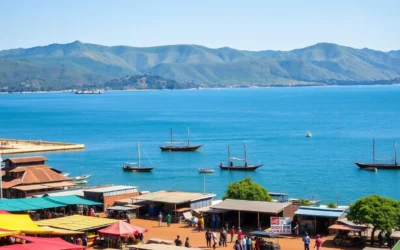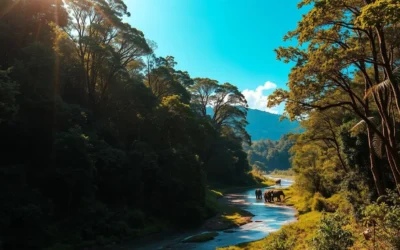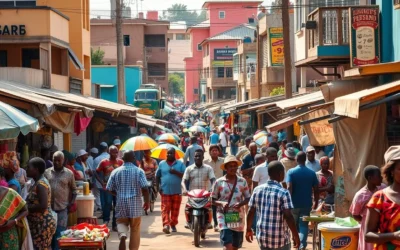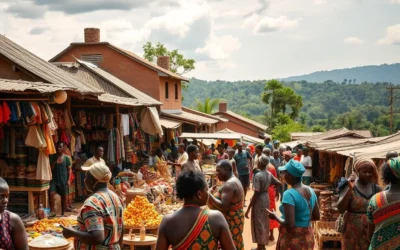✓ Accommodations✓ Flights✓ Rental Cars
As the diamond capital of the Democratic Republic of Congo, Mbuji-Mayi is a city that shines bright with cultural richness and industrial activity. Located in the Kasai-Oriental Province, this vibrant city is a hub of economic activity and a melting pot of traditions.
You can expect a unique travel experience when visiting Mbuji-Mayi, with a blend of local culture and industrial heritage. The city offers a range of attractions and activities that showcase its significance as a cultural center. From exploring the local markets to learning about the diamond mining industry, there’s something for every kind of traveler.
As you plan your trip, you’ll find that Mbuji-Mayi is a city that is worth exploring, despite being off the typical tourist path. With its authentic travel experience, you’ll get to immerse yourself in the local culture and traditions.
Discovering Mbuji-Mayi: The Diamond Capital of Congo
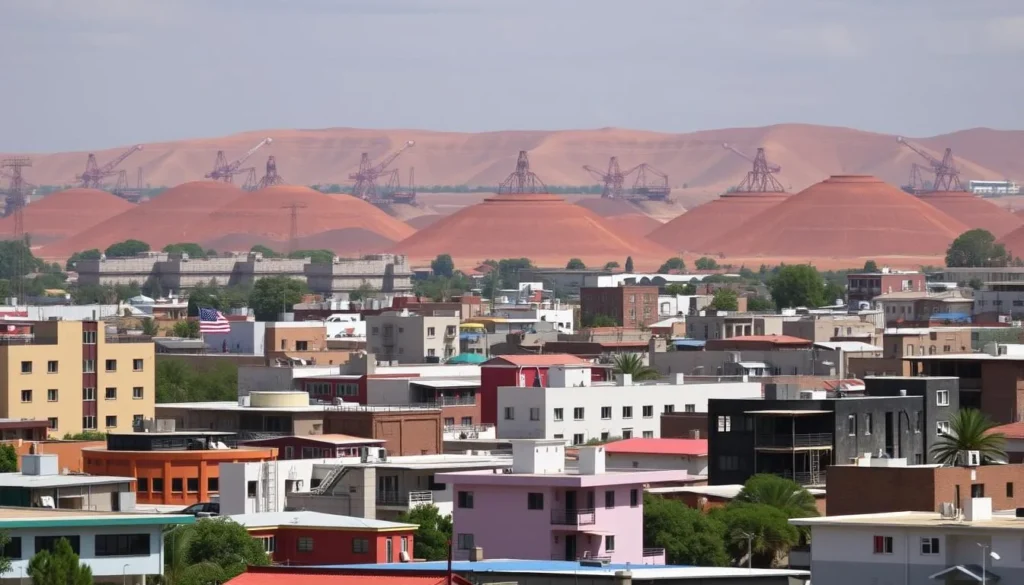
As the diamond capital of the Democratic Republic of Congo, Mbuji-Mayi is a city of significant economic importance. Located in the heart of the Kasai region, it is a major urban center known for its prolific diamond mines, which are among the largest in the world.
The city’s development from a small settlement to a major urban center was driven by the discovery and exploitation of diamond deposits in the region. Today, Mbuji-Mayi is a thriving city, with the diamond industry shaping daily life, from employment opportunities to the city’s infrastructure and development.
However, the wealth generated by the diamond industry contrasts with the challenges faced by the local population. Understanding this complex dynamic is crucial for visitors to appreciate the city’s nuances. Beyond diamond mining, Mbuji-Mayi serves as a commercial hub for the Kasai region, with other economic activities contributing to its character.
Geographically, Mbuji-Mayi is situated within the Democratic Republic of Congo, a location that has significantly influenced its development and current status. The city’s population and demographic makeup reflect its size and diversity, making it a fascinating place to explore.
In summary, Mbuji-Mayi is not only a city of economic importance but also a center of cultural history, making it a unique destination in the Democratic Republic of Congo.
Understanding Mbuji-Mayi’s Rich History and Cultural Heritage
As you explore Mbuji-Mayi, you’ll uncover the layers of its history and the vibrant cultural heritage that defines it. The city’s origin dates back to colonial times, but it rapidly developed with the diamond rush in the mid-20th century. Today, Mbuji-Mayi serves not just as an economic powerhouse but as a vibrant cultural center as well.
The name “Mbuji-Mayi” holds significant meaning in local languages, connecting deeply to the region’s cultural heritage. The Luba people and their kingdom have had a profound influence on the cultural identity of Mbuji-Mayi and the surrounding Kasai region. The city’s history is marked by key events, including the diamond rush and political developments post-independence in the Democratic Republic of Congo.
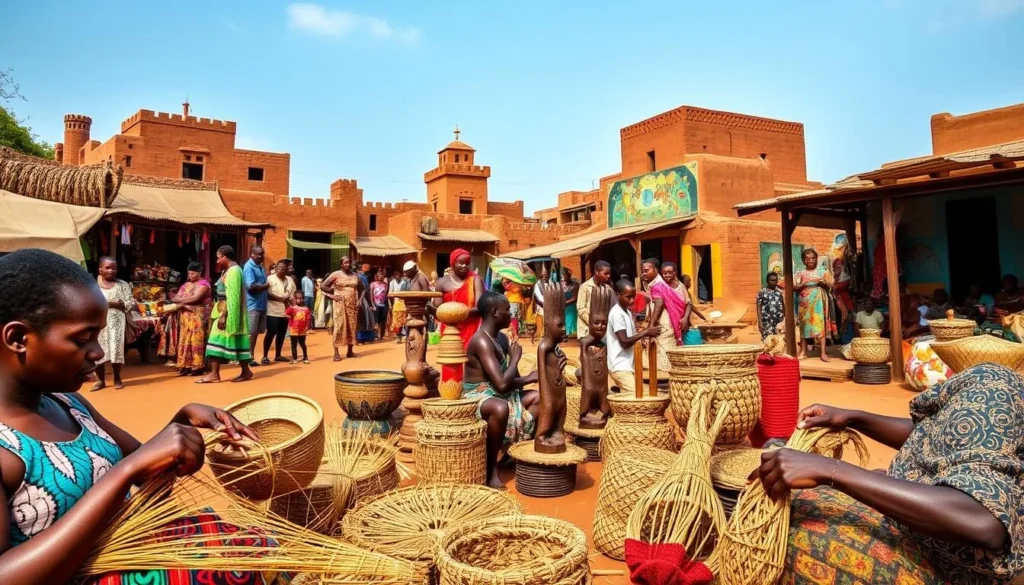
The blend of traditional customs and modern lifestyle has created a unique cultural landscape. Tshiluba is the predominant language, alongside French and other local languages, showcasing the city’s linguistic diversity. The people of Mbuji-Mayi practice a mix of Christianity and traditional spiritual beliefs, forming an integral part of the city’s cultural fabric.
Explore the Tshibua Market: A Cultural Hub
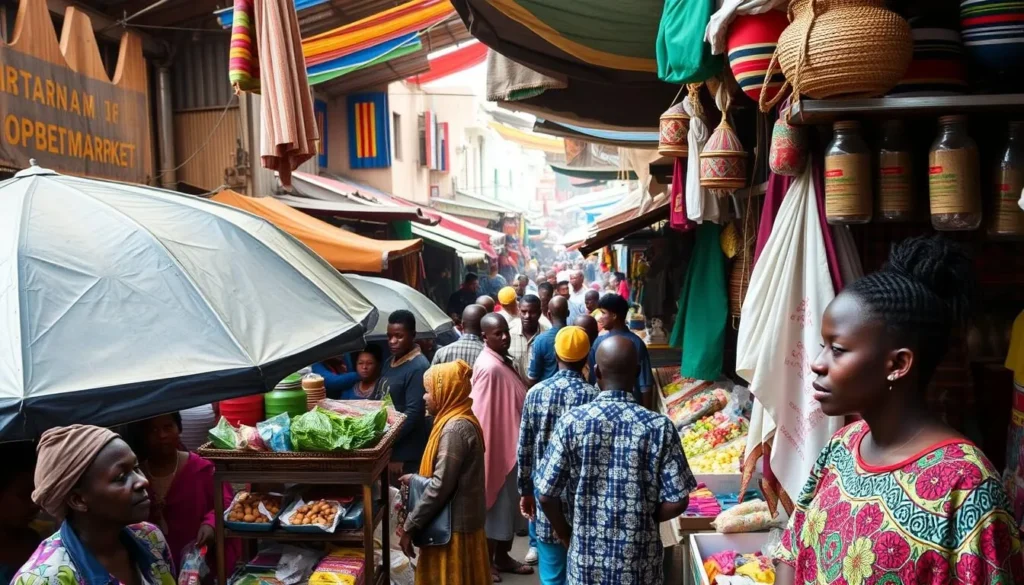
As you step into Tshibua Market, you’re instantly enveloped in the sights, sounds, and smells of Mbuji-Mayi’s daily life. This bustling market is one of the city’s most authentic cultural experiences, where locals and visitors alike can immerse themselves in the daily life of the city.
The market offers a variety of goods, from fresh produce and local delicacies to handcrafted items, textiles, and traditional medicines that reflect the cultural practices of the region. It’s a gathering place where news is exchanged, relationships are formed, and community bonds are strengthened.
To navigate the market, visit during the morning hours when the atmosphere is most vibrant. Be prepared to bargain, and interact respectfully with vendors. The market is also a great place to capture colorful scenes and dynamic interactions, but be sure to respect local customs regarding photography.
Tshibua Market is a significant economic hub for local families and small-scale entrepreneurs in Mbuji-Mayi, offering a unique travel experience in the Democratic Republic of Congo.
Visit the Impressive Mbuji-Mayi Cathedral
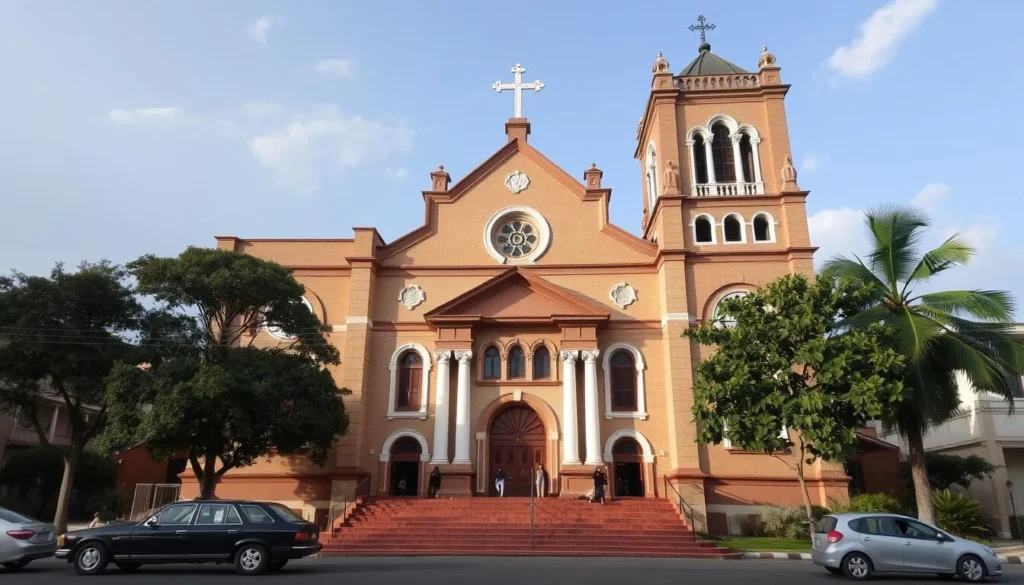
As you step into the heart of Mbuji-Mayi, the Mbuji-Mayi Cathedral stands out as a beacon of faith and architectural excellence in the Democratic Republic of Congo. This magnificent structure is not only a symbol of the city’s rich history and heritage but also a prominent landmark that reflects the resilience and spiritual strength of its community.
The cathedral’s construction is a testament to the city’s complex past, with its design influenced by colonial and local religious practices. The architectural features of the cathedral, including its imposing facade and intricate interior elements, make it a significant cultural hub in the city.
Visitors to the cathedral can observe its role in the religious and social life of Mbuji-Mayi, including community events and religious services. The interior is adorned with artwork and stained glass that reflect local cultural influences and religious symbolism, creating a serene and contemplative atmosphere.
For those planning to visit, it’s essential to be mindful of the dress code expectations and to respect the etiquette for visiting an active place of worship. The cathedral is open to visitors throughout the year, with special religious ceremonies and festivals taking place that are worth experiencing.
The Mbuji-Mayi Cathedral represents a unique blend of colonial influence and local adaptation in the religious practices of the Democratic Republic of Congo, making it a fascinating visit for anyone interested in history, heritage, and cultural identity.
Tour the Diamond Mines: Mbuji-Mayi’s Economic Powerhouse

A visit to Mbuji-Mayi is incomplete without touring the diamond mines that have shaped the city’s history and economy. The diamond mining industry is the lifeblood of Mbuji-Mayi, and a guided tour provides a unique insight into this significant sector.
The process of diamond mining in the region is complex, involving both industrial operations and artisanal mining practices. From extraction methods to sorting and initial processing, visitors can witness firsthand the techniques used to unearth these precious gems. The democratic republic congo is renowned for its rich diamond deposits, and Mbuji-Mayi is at the heart of this industry.
Mbuji-Mayi’s diamond industry plays a crucial role in the global market. The city’s diamonds are highly prized for their quality, and they enter the world market through various channels. Understanding the journey of these diamonds from mine to market provides valuable context for appreciating the city’s economic significance.
However, the diamond mining industry also raises ethical considerations, particularly regarding conflict-free sourcing and fair labor practices. Efforts are being made to address these issues, ensuring that the industry benefits both the local economy and the miners themselves.
For those interested in touring the diamond mines, practical information is available. Recommended tour operators offer guided tours, and visitors can expect a comprehensive experience. It’s essential to follow safety protocols and wear appropriate attire to ensure a safe and enjoyable visit.
As you travel through Mbuji-Mayi, the contrast between the wealth generated by the diamond industry and the socioeconomic realities of those working in the mines becomes apparent. This nuanced perspective highlights the complexity of the industry and its impact on the local community.
Experience Luba Art and Cultural Exhibitions
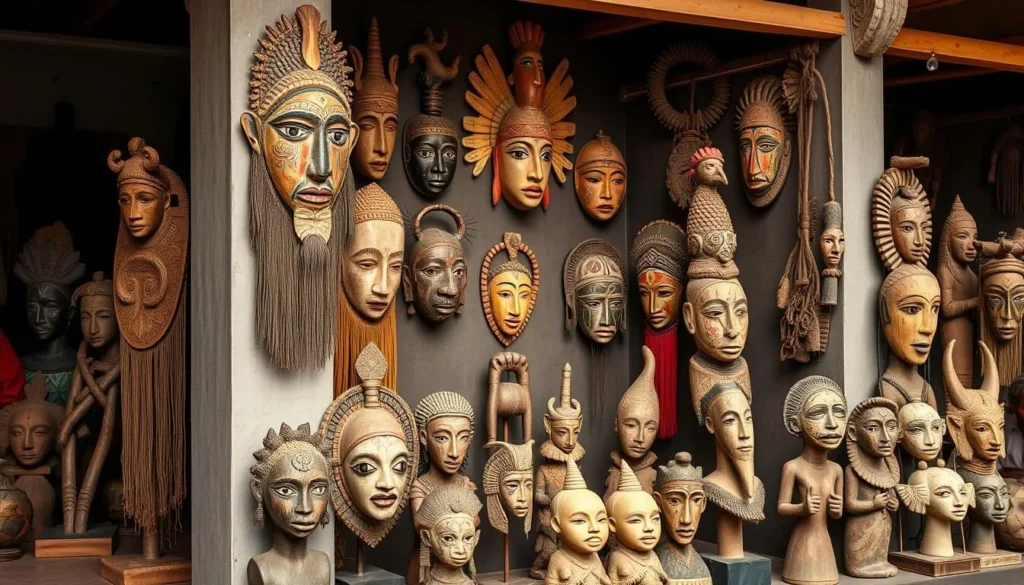
Visitors to Mbuji-Mayi can immerse themselves in the vibrant culture of the Luba people by attending local art exhibitions and cultural events. The Luba people’s artistic traditions are a significant part of the city’s cultural identity, with a rich heritage that is showcased in numerous exhibitions throughout the year.
The distinctive characteristics of Luba art include intricate sculptures, masks, and decorative objects, which hold symbolic significance in traditional society. These art forms are not only aesthetically pleasing but also play a crucial role in the Luba people’s religious practices, political structures, and social ceremonies.
In Mbuji-Mayi, visitors can view exhibitions of Luba art in formal galleries, cultural centers, and community spaces. These venues provide a platform for contemporary artists to preserve and reinterpret traditional Luba artistic expressions while developing new forms that reflect modern realities.
Cultural performances, such as traditional music, dance, or storytelling events, often complement the art exhibitions, offering a deeper insight into Luba heritage. Visitors can also meet local artists, participate in workshops, or purchase authentic art pieces as meaningful souvenirs of their time in the Democratic Republic of Congo.
By experiencing Luba art and cultural exhibitions, visitors can gain a richer understanding of the Democratic Republic of Congo’s culture and heritage, and appreciate the significance of the Luba people’s artistic traditions in the region.
Attend the Vibrant Luba Festival and Cultural Celebrations
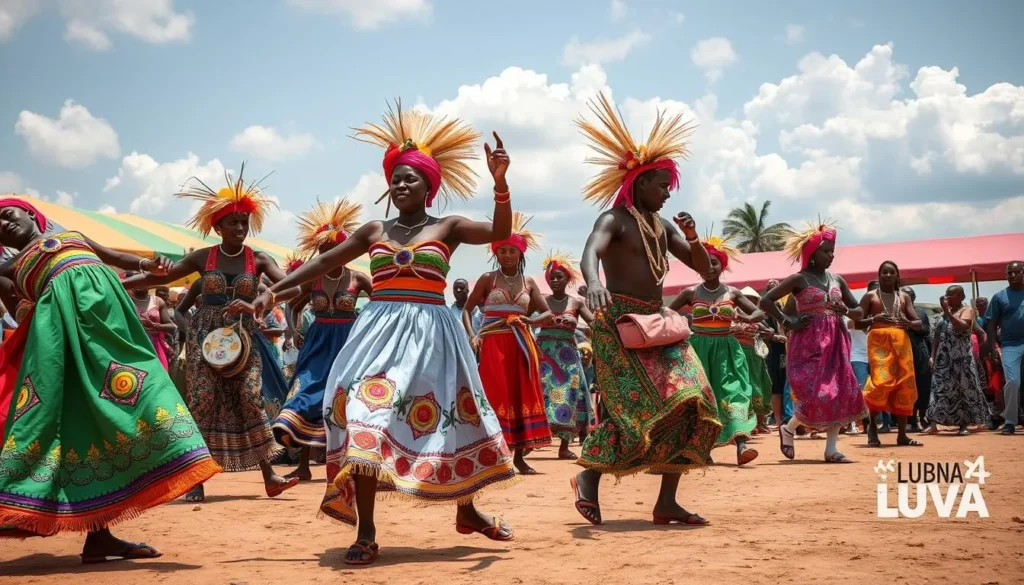
Mbuji-Mayi comes alive during the Luba Festival, a celebration that embodies the city’s cultural heritage. Held typically in the dry season (May to September), this event is a highlight of the cultural calendar in the Democratic Republic of Congo.
The Luba Festival is a vibrant display of traditional dances, music concerts, craft demonstrations, and ceremonial rituals. Visitors can immerse themselves in the rich culture of the Luba people, experiencing firsthand the customs and traditions that have been passed down through generations.
These festivals are not just entertainment; they are a celebration of the community’s collective identity. By attending, you become part of a larger cultural narrative that strengthens social bonds among the people of Mbuji-Mayi and the wider Democratic Republic of Congo.
When visiting, it’s essential to be respectful of local customs. Dress modestly and be mindful of your surroundings. This will not only enhance your experience but also show respect for the local culture.
For those interested in capturing the moment, the Luba Festival offers numerous opportunities for culture photography. Be considerate of your subjects and ask for permission before taking photos, ensuring a positive interaction with the local community.
Explore the Natural Surroundings of Mbuji-Mayi
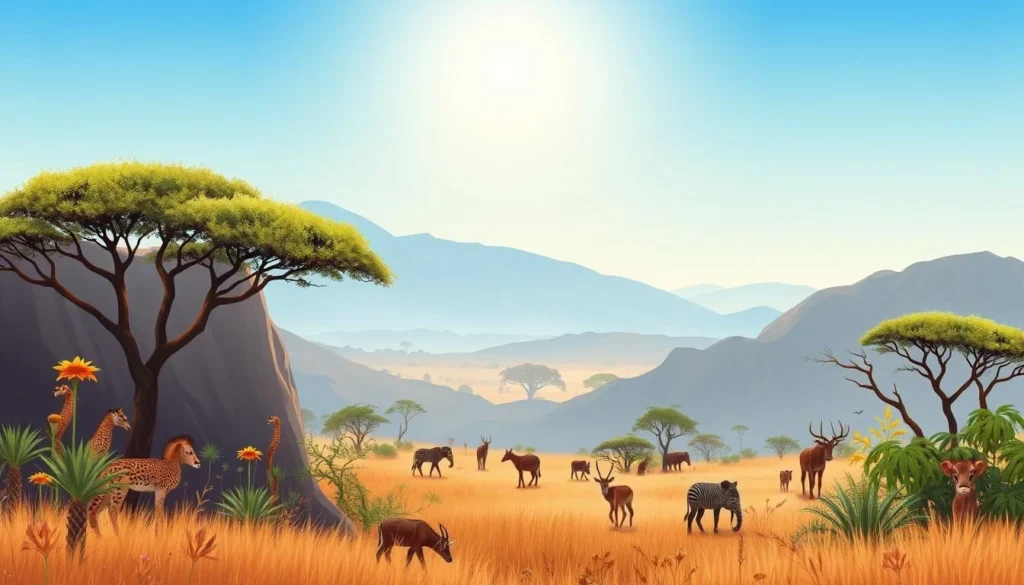
The natural beauty surrounding Mbuji-Mayi is a treasure trove of ecosystems, from savannas to river valleys, offering a unique experience for visitors. The diverse natural landscapes include forested areas that are home to a wide variety of wildlife, such as bird species and small mammals.
One of the specific natural attractions near the city is the scenic viewpoint overlooking the Sankuru River, which is accessible to visitors. The river valleys and surrounding landscapes are not only breathtaking but also provide insight into the region’s ecological interest.
Seasonal variations significantly impact the natural environment around Mbuji-Mayi. The dry season is ideal for spotting wildlife, while the wet season brings lush landscapes and vibrant flora. Understanding these variations can help visitors plan their trip to experience the best of the region’s natural beauty.
Conservation efforts are underway to protect the natural resources around Mbuji-Mayi. Community-based initiatives play a crucial role in supporting sustainable development while preserving the area’s natural charm. Visitors can participate in guided nature walks to explore these areas safely and gain insight into the local ecosystem.
When engaging in outdoor activities, it’s essential to follow practical tips, including using recommended gear, taking safety precautions, and adhering to ethical guidelines to minimize environmental impact.
Mbuji-Mayi, Democratic Republic of the Congo: Best Things to Do for Food Enthusiasts
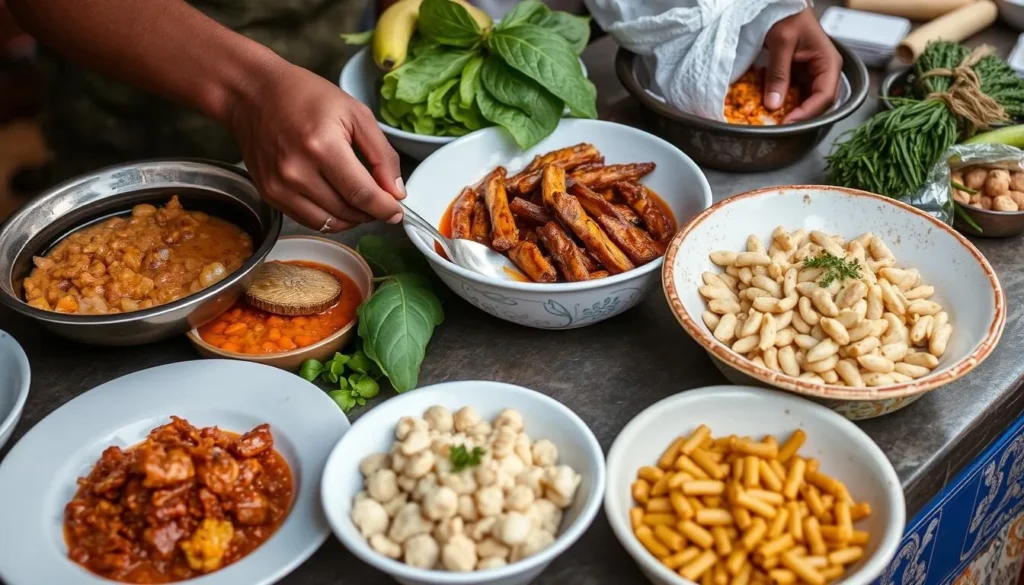
For food enthusiasts, Mbuji-Mayi is a hidden gem in the Democratic Republic of Congo, providing a unique gastronomic experience. The city’s culinary landscape is a reflection of both local Kasai traditions and broader Congolese food culture.
You should try signature local dishes such as fufu (cassava or corn paste) and pondu (cassava leaves), along with various meat and fish preparations that showcase regional flavors. These dishes are not only delicious but also deeply rooted in the local culture.
To sample authentic local cuisine, visit the Tshibua Market, where you can find a variety of food stalls and vendors serving traditional Congolese dishes. For a more upscale experience, consider dining at one of the city’s top restaurants, known for their quality and authenticity.
Food sharing and communal dining are significant aspects of the local culture in Mbuji-Mayi. When you dine with locals, you’re not just enjoying a meal; you’re participating in a cultural tradition that emphasizes community and hospitality.
The agricultural practices in the surrounding region have a profound influence on Mbuji-Mayi’s food culture. Locally grown ingredients feature prominently in traditional dishes, ensuring that the cuisine is fresh and flavorful.
For a more immersive culinary experience, consider taking a cooking class or joining a market tour with a local guide. You can also participate in food preparation with local families, gaining a deeper understanding of the region’s culinary traditions.
If you have dietary restrictions or food allergies, it’s essential to communicate your needs clearly. Many local restaurants and food vendors are willing to accommodate special requests, ensuring that you can enjoy the local cuisine safely.
Day Trips from Mbuji-Mayi: Exploring the Kasai Region
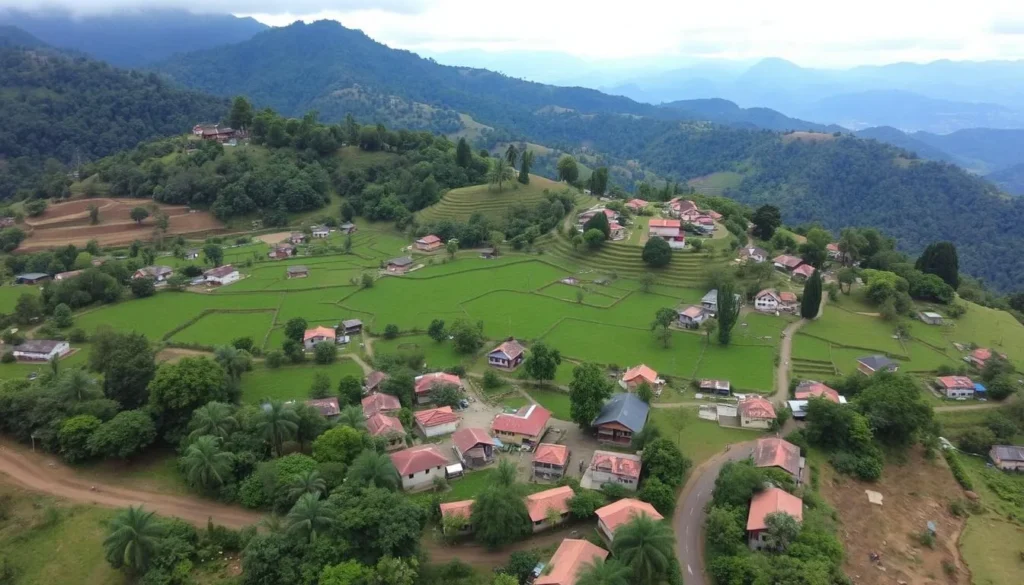
The Kasai Region, surrounding Mbuji-Mayi, is a treasure trove of cultural experiences and natural beauty, perfect for day trips. You can explore nearby towns and villages, such as Tshilenge and Lubondaie, which offer insights into traditional lifestyles and local craftsmanship.
For nature lovers, the Kasai River provides opportunities for scenic boat rides and fishing. You can also visit the Lubudi area, known for its diverse wildlife, including various bird species and other animals in their natural habitats.
When organizing day trips, consider hiring local guides to enhance your experience and ensure safety. Be sure to arrange reliable transportation in advance. With its rich history, vibrant culture, and stunning natural beauty, the Kasai Region is a destination worth exploring during your stay in the Democratic Republic of Congo.
Practical Travel Tips for Visiting Mbuji-Mayi
As you plan your trip to Mbuji-Mayi, understanding the practical aspects of traveling to this vibrant city in the Democratic Republic of Congo is essential. Thebest time to visit Mbuji-Mayiis during the dry season, from May to September, when the weather is most favorable for exploring the city and partaking in outdoor activities.
To reach Mbuji-Mayi, you can fly into Mbuji Mayi Airport or travel overland from other cities in the Democratic Republic of Congo. The city offers variousaccommodation options, ranging from international-standard hotels to local guesthouses, catering to different comfort levels and budgets.
When traveling to Mbuji-Mayi, it’s crucial to considerhealth and safety. Ensure you have the recommended vaccinations and take malaria prevention measures. Be aware of your surroundings and follow local advice to ensure your safety.
Within the city, you can usetaxis, motorbike taxis, or private driversto get around. Negotiating fares in advance is advisable. For communication, mobile networks and internet access are available, although it’s helpful to learn basic phrases in French and Tshiluba.
For money matters, theCongolese francis the local currency. ATMs are available, and tipping customs should be observed. By being informed about these practical aspects, you can have a more enjoyable and stress-free visit to Mbuji-Mayi.
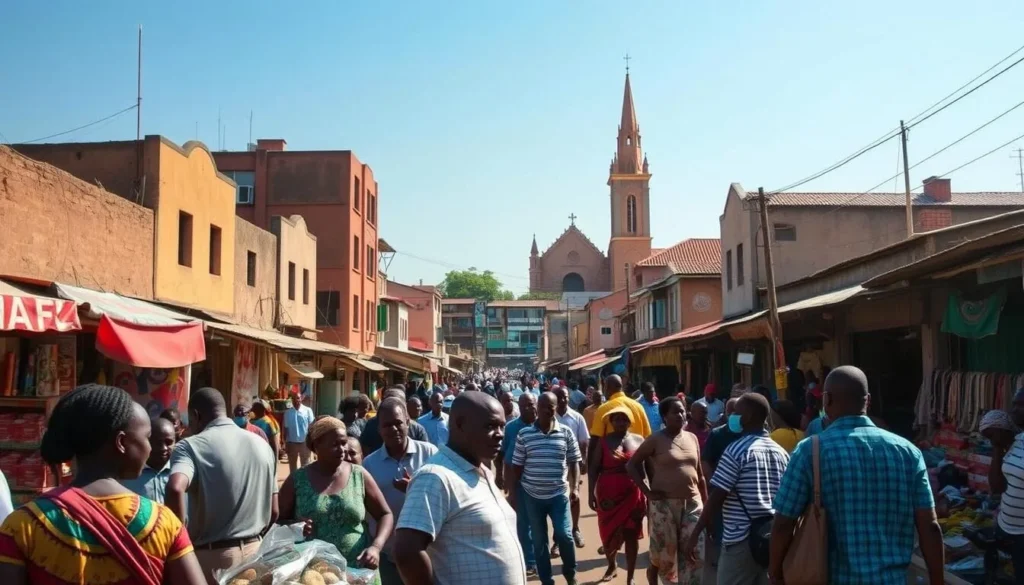
Conclusion: Is Mbuji-Mayi Worth Visiting?
If you’re drawn to destinations that are untouched by mass tourism, Mbuji-Mayi could be your next adventure. This city offers a unique glimpse into the Democratic Republic of Congo’s diamond industry and the rich cultural heritage of the Luba people.
While there are logistical challenges, including limited tourist infrastructure, the rewards of experiencing Mbuji-Mayi’s raw and untamed facets make it a compelling destination for the right traveler. It’s ideal for those seeking cultural immersion and a deeper understanding of the region’s economy.
Mbuji-Mayi complements visits to better-known destinations like Virunga National Park, contributing to a more nuanced understanding of the Democratic Republic of Congo. As the country’s tourism sector develops, Mbuji-Mayi has the potential to become a significant destination in its own right.
The above is subject to change.
Check back often to TRAVEL.COM for the latest travel tips and deals.
